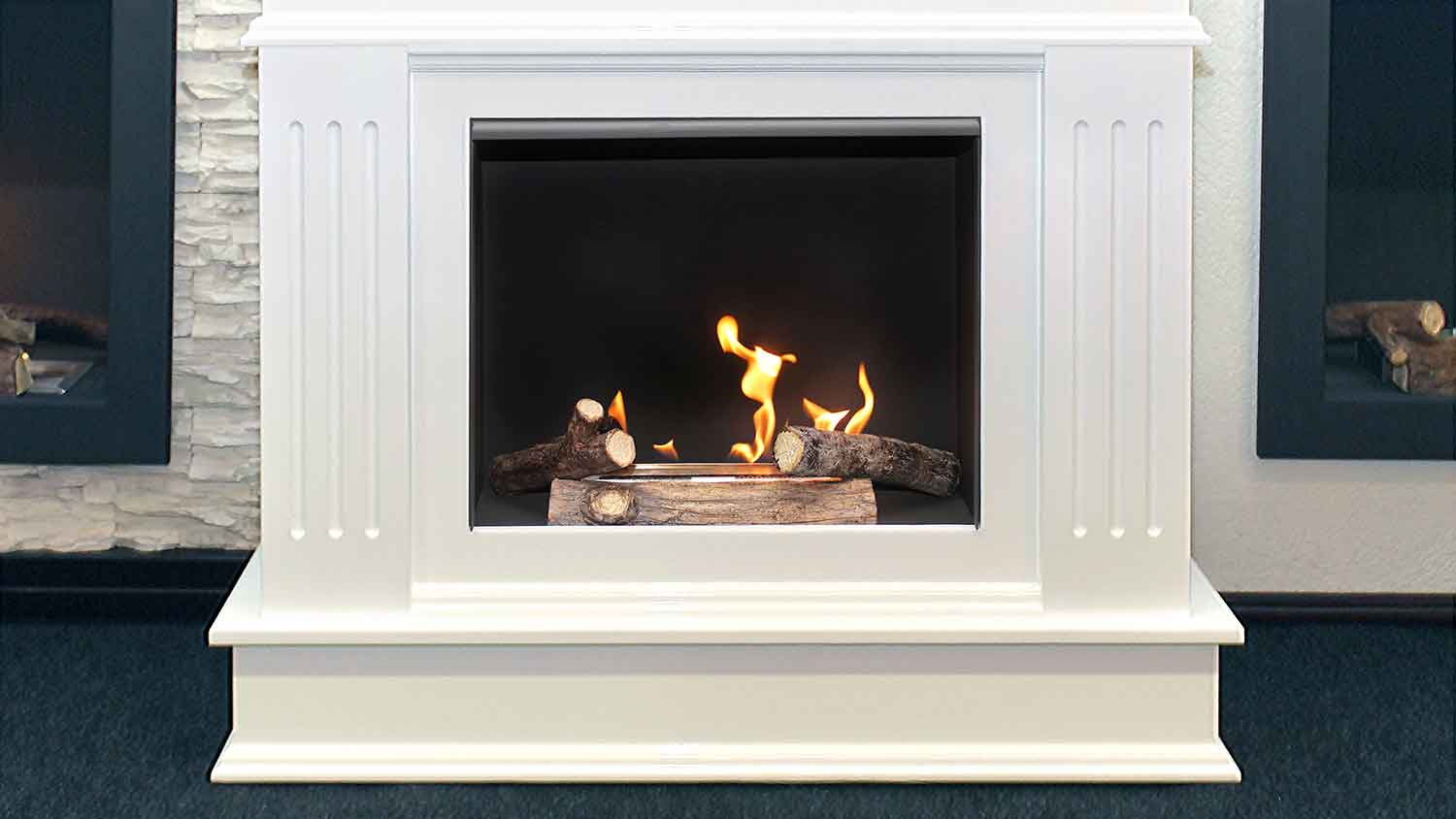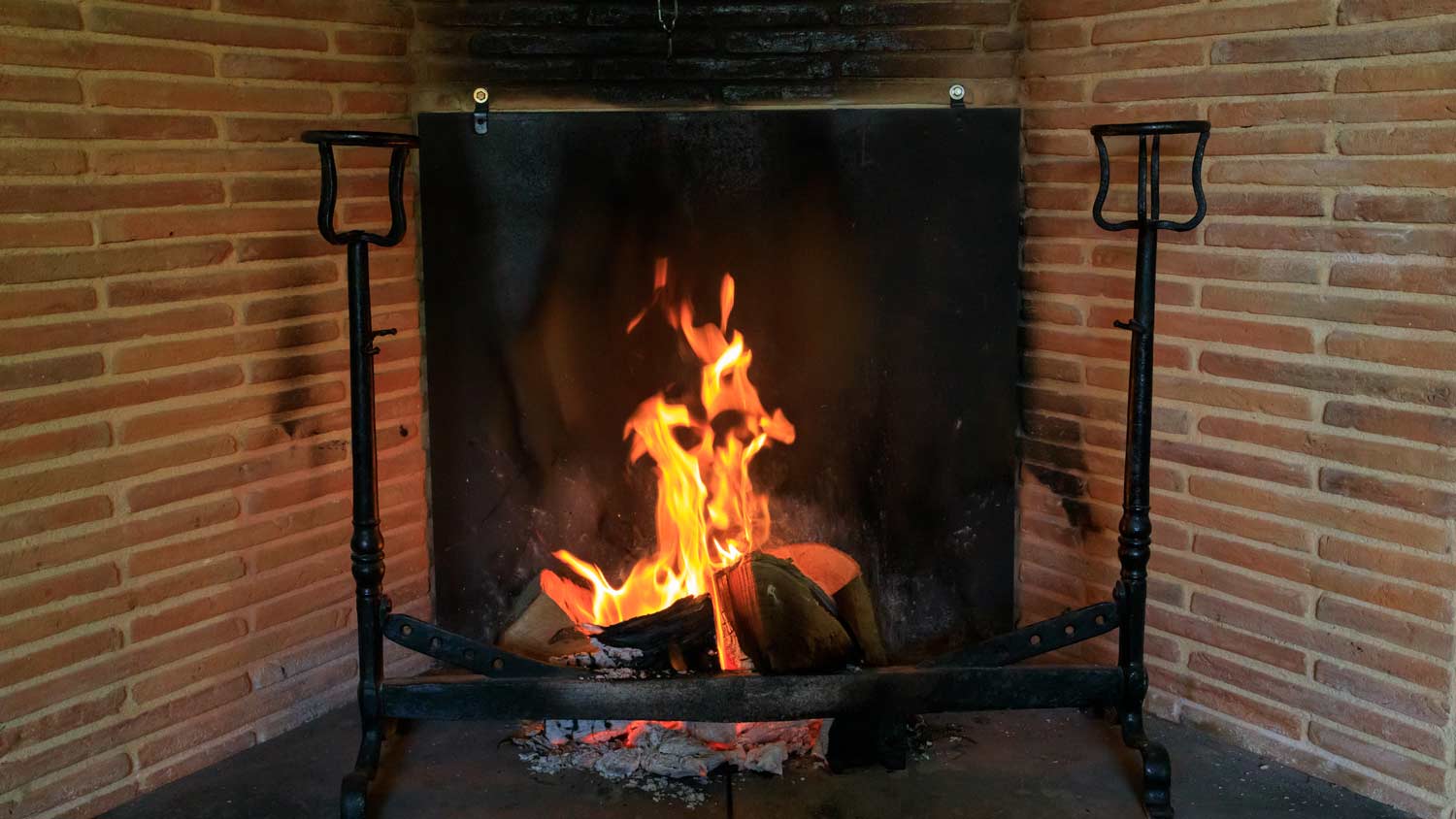How to Clean a Stone Fireplace and Remove Soot With Ease
Dingy soot doesn’t have to put a damper on the look of your stone fireplace


- Short-handle shovel
- Metal ash bin
- Shop vacuum
- Nylon scrub brush
- Plastic bucket
- Drop cloths or tarps
- Gloves
- Dust mask
- Dish soap
- TSP (trisodium phosphate)
As you burn wood in your stone fireplace, you will eventually see a buildup of smoke residue and soot on the exterior and interior surfaces, giving the stone a drab look. Fortunately, cleaning these contaminants is not a difficult process, only requiring some time and elbow grease. And after you finish, your fireplace will return to its majestic original self as the centerpiece of the room.
Why Is It Important to Clean a Stone Fireplace?
The most important reason to clean a stone fireplace is safety. Those cozy wood fires leave behind a combustible residue that builds up over time. If you don’t clean it out, the soot and creosote can ignite and cause a chimney fire. Cleaning your stone fireplace also boosts the visual appeal and tidies up your home.
Prepping to Clean Soot Off a Stone Fireplace
It is important to use the right cleaning techniques and products on the stone, as some types of porous stone could suffer damage from using the wrong materials and cleansers. Avoid materials like abrasive cleansing powders, bleach, or metal bristle scrub brushes. Such materials are also a concern when trying to clean a brick fireplace.
This can be an extremely messy job, as ashes and dust could end up floating through the room. Place drop cloths or tarps over furniture near the fireplace to catch this dust. You also should place a drop cloth at the opening of the fireplace to catch spilled ashes and other dust. As you apply cleaning solutions, the liquid may run down the stone, and the drop cloth will catch it.
Do not clean the fireplace for at least several hours after the final ember goes out. You need to let the area cool completely before cleaning a stone fireplace.
Remove Ashes From Inside the Fireplace
 Photo: Dana Keli / Adobe Stock
Photo: Dana Keli / Adobe StockMost of your cleaning work will involve the exterior of the fireplace and the stone hearth. However, you should start by removing ashes from the firebox. Wear a dust mask, as breathing in the fine dust from the ashes could irritate your throat.
Digging out the ashes is a messy job, but it’s important to do on a regular basis. Use your short-handled shovel to scoop the ashes and carefully dump them in a metal bin. If you have a separate metal grate inside the fireplace, remove it to make the process easier.
Place the bin on top of the tarp to avoid making a mess all over your living room. But beware—even if you are careful, this process likely will kick up a cloud of dust.
Vacuum Dust From the Stone Surface
The next step in cleaning a stone fireplace is using a shop vacuum with a brush attachment. Vacuum any remaining ashes from inside the fireplace.
Run the vacuum over the stone surface on the exterior of the fireplace, removing dust and stray ashes, starting at the top of the fireplace and working your way down.
Depending on the height of your fireplace stone structure, you may need a stepladder.
Apply a Dish Soap and Water Mixture
Fill most of a 1-gallon bucket with hot tap water. Then add up to 1/4 cup of dish soap, which should be enough to clean a light layer of soot off a stone fireplace. Avoid agitating the mixture too much (too many suds could make things even messier).
Dunk the scrub brush in the bucket and start scrubbing the fireplace stone from the top down. You will have drips of solution run down the stone, so be sure the drop cloth is in place to catch them before they hit the floor.
Rinse the Remaining Solution Off the Stone
Empty the bucket and refill it with cold water. Dunk a rag in the bucket and wipe down the stone, again working from the top to the bottom. This should remove any remaining loose dust or soot from the stone fireplace.
Use TSP to Clean Thick Soot Off a Stone Fireplace
 Photo: fotoduets / Adobe Stock
Photo: fotoduets / Adobe StockIf you have a thick layer of soot that is making it difficult to clean your stone fireplace, you may need to try TSP, or trisodium phosphate. TSP can cause skin burns and eye irritation, so always wear waterproof gloves, safety goggles, and old clothing that covers any exposed skin when using it.
Fill your 1-gallon bucket about three-quarters full with hot tap water before adding up to half a cup of TSP. Stir the mixture to dissolve the TSP.
Use your scrub brush as you did with the dish soap mixture, starting at the top of the stone fireplace and working your way down.
You may find that you don’t need the TSP solution to clean soot off the stone fireplace’s exterior because the soot concentration is low and the dish soap mixture handled it. But if you want to clean the interior firebox, TSP is the best option, as the soot concentration will be high here.
If you have especially stubborn soot stains, use a higher concentration of TSP mixed with water to make a TSP paste and apply it to the stain.
Because TSP requires careful handling and protective gear on your part, you may simply want to hire a professional to clean your stone fireplace.
Rinse the TSP Solution
Empty the bucket and fill it with cold water. Dip a rag in the bucket and use it to clean the TSP mixture from the stone fireplace. Work from top to bottom. Then allow the stone to air dry.
DIY vs. Hiring a Pro
Although cleaning a stone fireplace is a relatively easy process, it does take some time and quite a bit of hard scrubbing. You also probably will need to climb a step ladder to reach the top of the fireplace stone.
If you’d rather avoid the mess of this job or if you don’t feel comfortable working from a ladder, you can hire a local chimney sweep to do it for you.
If you’re already hiring a professional to clean the interior of your chimney, adding a job of cleaning soot off the stone fireplace may not increase your chimney sweep cost all that much. If you are wondering how often to clean a chimney, once a year usually is sufficient.
Frequently Asked Questions
If you would rather use vinegar to clean the stone fireplace instead of dish soap, this mixture should work fine. Vinegar is slightly acidic, however, so it may etch some kinds of stone without quite a bit of diluting. For a stone fireplace, dilute it to about one cup of vinegar for every gallon of hot water. It’s a smart idea to test the diluted mixture in an inconspicuous area of the fireplace and watch for etching. You can use vinegar to clean quite a few different items around your home, and it’s especially good at removing stains.
Avoid using abrasive cleansing powders on natural stone, as these products could damage the porous material. Using bleach is also a poor idea because of the porosity of the stone. Avoid using a scrub brush with metal bristles, as they could scratch the stone. If you know who manufactured your stone or who installed the fireplace, you may want to contact that entity for any advice on cleaning it safely.















